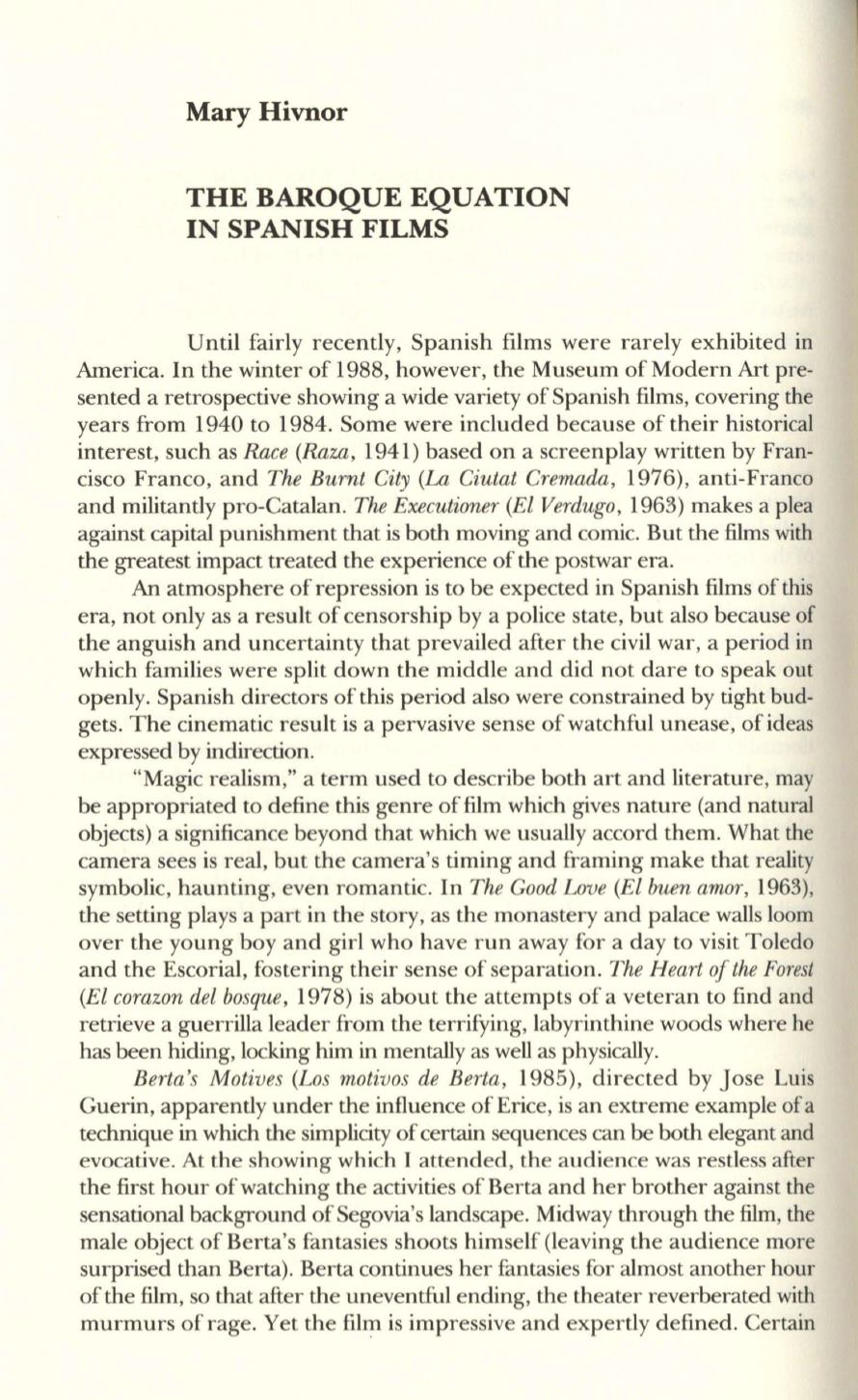
Mary Hivnor
THE BAROQUE EQUATION
IN SPANISH FILMS
Until fairly recently, Spanish films were rarely exhibited in
America.
In
the winter of 1988, however, the Museum of Modern Art pre–
sented a retrospective showing a wide variety of Spanish films, covering the
years from 1940 to 1984. Some were included because of their historical
interest, such as
Race (Raza,
1941) based on a screenplay written by Fran–
cisco Franco, and
The Burnt City
(La
Ciutat Cremada,
1976), anti-Franco
and militantly pro-Catalan.
The Executioner (El Verdugo,
1963) makes a plea
against capital punishment that is both moving and comic. But the films with
the greatest impact treated the experience of the postwar era.
An
atmosphere of repression is to be expected in Spanish films of this
era, not only as a result of censorship by a police state, but also because of
the anguish and uncertainty that prevailed after the civil war, a period in
which families were split down the middle and did not dare to speak out
openly. Spanish directors of this period also were constrained by tight bud–
gets. The cinematic result is a pervasive sense of watchful unease, of ideas
expressed by indirection.
"Magic realism," a term used to describe both art and literature, may
be appropriated to define this genre of film which gives nature (and natural
objects) a significance beyond that which we usually accord them. What the
camera sees is real, but the camera's timing and framing make that reality
symbolic, haunting, even romantic.
In
The Good Love (El buen amor, 1963),
the setting plays a part in the story, as the monastery and palace walls loom
over the young boy and girl who have run away for a day to visit Toledo
and the Escorial, fostering their sense of separation.
The Heart of the Forest
(El corazon del bosque,
1978) is about the attempts of a veteran to find and
retrieve a guerrilla leader from the terrifying, labyrinthine woods where he
has been hiding, locking
him in
mentally as well as physically.
Berta's Motives (Los motivos de Berta,
1985), directed by Jose Luis
Guerin, apparently under the influence of Erice, is an extreme example of a
technique
in
which the simplicity ofcertain sequences can be both elegant and
evocative. At the showing which I attended, the audience was restless after
the first hour of watching the activities of Berta and her brother against the
sensational background of Segovia's landscape. Midway through the
film,
the
male object of Berta's fantasies shoots himself (leaving the audience more
surprised than Berta). Berta continues her fantasies for almost another hour
of the film, so that after the uneventful ending, the theater reverberated with
murmurs ofrage. Yet the film is impressive and expertly defined. Certain


